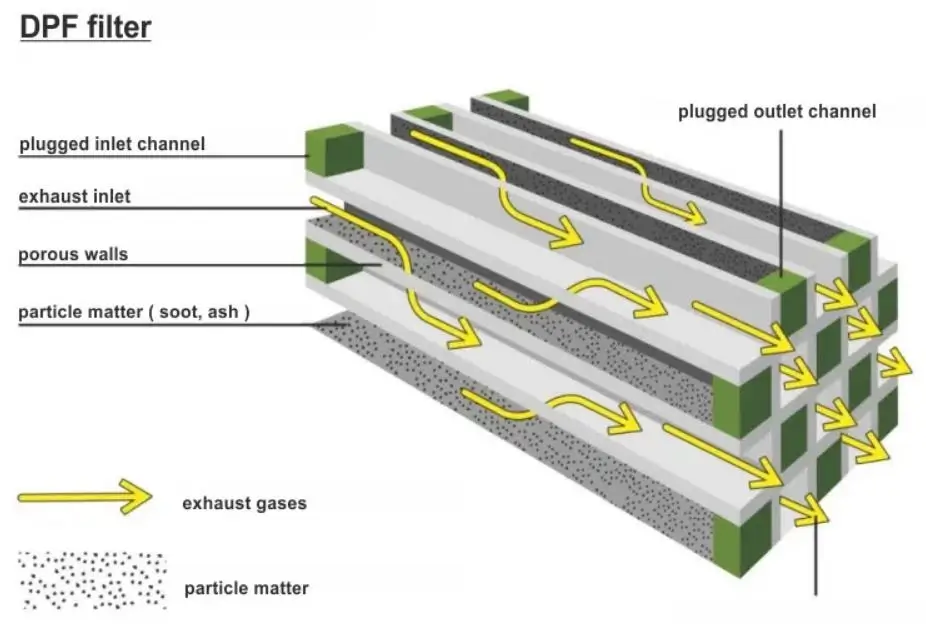Understanding a Diesel Particulate Filter: How They Work
Learn how a Diesel Particulate Filter Works and How they Regenerate
A diesel particulate filter (DPF) is an emissions control device that is used to capture and remove diesel particulate matter or soot from the exhaust gas of a diesel engine. Diesel particulate matter is composed of tiny particles that can be harmful to human health if inhaled, so reducing these emissions is important for improving air quality.
DPF Filter construction
The most common diesel particulate filters in widespread use are cellular ceramic honeycomb filters with channels that are plugged at alternating ends. The ends of the filter, plugged in a checkerboard pattern, force the soot-containing exhaust to flow through the porous filter walls. While the exhaust gas can flow through the walls, the soot particles are trapped within the filter pores and in a layer on top of the channel walls.
For more detailed information of DPF, visit KinKar
Diesel particulate filter clogging and regeneration
As soot builds up on the filter over time, it will begin to clog and restrict exhaust flow. To clean the filter, modern diesel engines are equipped with regeneration systems that periodically burn off the accumulated particulate matter.
Active versus passive Diesel particulate filter regeneration
Passive regeneration
Passive regeneration takes advantage of the exhaust gas temperature. Under normal operating conditions, the exhaust gas may reach 482° – 842° F (250–450°C). At these temperatures, nitrogen dioxide (NO2) present in the exhaust stream reacts with the carbon components of the collected particulate matter. This reaction converts the carbon to CO2 and allows it to be expelled out of the filter as a gas.
To ensure that adequate NO2 is available for passive regeneration, many diesel vehicles utilize a diesel oxidation catalyst (DOC) or a catalyzed DPF. A DOC converts carbon monoxide and hydrocarbons in the exhaust into water vapor and CO2. This reaction also produces NO2, which can then flow downstream to the DPF to enable regeneration.
Active regeneration
If conditions prevent passive regeneration from adequately cleaning the DPF, then active regeneration methods may be used. Active regeneration uses additional heat to burn off the soot particles faster. One method injects late fuel into the exhaust stream after the engine’s combustion event. The unburnt fuel combusts in the hot exhaust, raising the temperature. Other systems may utilize electric heating elements or burner devices to raise exhaust temperatures for filter cleaning.
Most DPF systems are designed with a service interval of 100,000 to 125,000 miles to remove and clean the filter. At service, the DPF is removed from the vehicle and put through a deep cleaning or refurbishing process to allow reuse. Some disposable filters are also available.
Particulate Matter Monitoring
The PM monitor tracks the efficiency of the DPF filter in trapping particulate matter, as well as the ability of the filter to regenerate (self-clean).
The PM Filter Monitor is a “Two-Trip” Monitor. If a fault is found on the first trip, the computer temporarily saves the fault in its memory as a Pending Code. The computer does not command the MIL on at this time. If the fault is sensed again on the second trip, the computer commands the MIL “On,” and saves the code in its long-term memory.
©, 2022 Rick Muscoplat
Posted on by Rick Muscoplat

